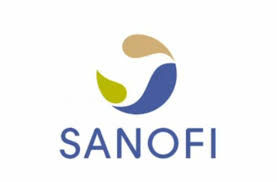预约演示
更新于:2025-05-07
Mallinckrodt Pharmaceuticals Ireland Ltd.
注销
| 子公司|Ireland注销
| 子公司|Ireland更新于:2025-05-07
概览
标签
其他疾病
神经系统疾病
免疫系统疾病
合成多肽
疾病领域得分
一眼洞穿机构专注的疾病领域
暂无数据
技术平台
公司药物应用最多的技术
暂无数据
靶点
公司最常开发的靶点
暂无数据
| 排名前五的药物类型 | 数量 |
|---|---|
| 合成多肽 | 2 |
关联
3
项与 Mallinckrodt Pharmaceuticals Ireland Ltd. 相关的药物作用机制 AVPR1A激动剂 [+2] |
在研机构 |
最高研发阶段批准上市 |
首次获批国家/地区 澳大利亚 |
首次获批日期2012-05-14 |
作用机制 melanocortin receptor激动剂 |
最高研发阶段批准上市 |
首次获批国家/地区 美国 |
首次获批日期1950-07-03 |
靶点- |
作用机制- |
在研机构- |
在研适应症- |
最高研发阶段撤市 |
首次获批国家/地区 欧盟 [+3] |
首次获批日期2015-03-19 |
100 项与 Mallinckrodt Pharmaceuticals Ireland Ltd. 相关的临床结果
登录后查看更多信息
0 项与 Mallinckrodt Pharmaceuticals Ireland Ltd. 相关的专利(医药)
登录后查看更多信息
1
项与 Mallinckrodt Pharmaceuticals Ireland Ltd. 相关的文献(医药)Medical Devices: Evidence and Research
Compatibility and Safety Implications Associated with Interfacing Medical Devices in Neonatal Respiratory Care: A Case Example Using the Inhaled Nitric Oxide Delivery System
Review
作者: DeWitt, Anthony L ; Potenziano, Jim L ; Acker, Jaron ; Schmidt, Jeffrey M ; Larkin, Thomas A
1
项与 Mallinckrodt Pharmaceuticals Ireland Ltd. 相关的新闻(医药)2019-07-29
Silence Therapeutics, PLC is pleased to announce that further to the announcements on 18 July 2019 detailing the Company’s collaboration with and equity investment by Mallinckrodt plc, Steven Romano, MD, has joined the Board of Silence as a Non-Executive Director.
July 29, 2019
LONDON,
Silence Therapeutics, PLC
(LON: SLN) (“Silence” or “the Company”) a leader in the discovery, development and delivery of novel RNA therapeutics for the treatment of serious diseases, is pleased to announce that further to the announcements on 18 July 2019 detailing the Company’s collaboration with and equity investment by Mallinckrodt plc (NYSE: MNK), Steven Romano, MD, has today joined the Board of Silence as a Non-Executive Director.
Dr. Steven Romano is executive vice president and chief scientific officer at Mallinckrodt Pharmaceuticals and was appointed a non-executive director of Silence Therapeutics plc in July 2019. At Mallinckrodt, Dr. Romano has executive responsibility for research and development (R&D), medical affairs and regulatory affairs functions and is a member of Mallinckrodt’s executive committee.
Dr. Romano is a board-certified psychiatrist with more than 20 years of experience in the pharmaceutical industry. Prior to joining Mallinckrodt, Dr. Romano spent 16 years at Pfizer, Inc. where he held a series of senior medical and R&D roles of increasing responsibility, culminating in his most recent position as SVP, Head, Global Medicines Development, Global Innovative Pharmaceuticals Business. Prior to joining Pfizer, he spent four years at Eli Lilly.
After receiving his A.B. in Biology from Washington University in St. Louis and his medical degree from the University of Missouri-Columbia, Dr. Romano completed his residency and fellowship at New York Hospital-Cornell Medical Center, continuing on the faculty of the medical school for six additional years.
Dr. David Horn Solomon, Chief Executive Officer of Silence Therapeutics, commented:
“I’m very pleased to welcome Dr. Steven Romano to our Board of Directors. With his executive responsibility for research and development (R&D), medical affairs and regulatory affairs functions at Mallinckrodt, Steve brings wealth of experience that is highly relevant to the current stages of development of Silence’s assets.”
The following information is disclosed pursuant to Schedule Two, paragraph (g) of the AIM Rules for Companies:
Full name and age: Steven Joseph Romano (aged 60)
Current Directorships:
Mallinckrodt Pharmaceuticals Ireland Limited
Steven Romano does not currently hold any shares in Silence.
There are no other disclosures required in connection with the appointment of Steven Romano under Schedule Two, paragraph (g) of the Aim Rules for Companies.
Enquiries:
Silence Therapeutics plc
Dr David Horn Solomon, Chief Executive Officer
Tel: +44 (0)20 3457 6900
Peel Hunt LLP (Nominated Adviser and Broker)
James Steel/Oliver Jackson
Tel: +44 (0)20 7418 8900
European IR
Consilium Strategic Communications
Mary-Jane Elliott/Chris Welsh/Angela Gray
silencetherapeutics@consilium-
comms.com
Tel: +44 (0) 20 3709 5700
US IR
Westwicke Partners
Peter Vozzo
peter.vozzo@westwicke.com
Tel: +1 (443) 213-0505
About Silence Therapeutics plc
Silence Therapeutics is developing a new generation of medicines by harnessing the body’s natural mechanism of RNA interference, or RNAi, within its cells. Its proprietary technology can selectively inhibit any gene in the genome, specifically silencing the production of disease-causing proteins. Using its enabling delivery systems, it has achieved an additional level of specificity by delivering its therapeutic RNA molecules exclusively to target cells. Silence’s proprietary RNA chemistries and delivery systems are designed to improve the stability of our molecules and enhance effective delivery to target cells, providing a powerful modular technology well suited to tackle life-threatening diseases.
For more information, please visit:
therapeutics.com/
高管变更
100 项与 Mallinckrodt Pharmaceuticals Ireland Ltd. 相关的药物交易
登录后查看更多信息
100 项与 Mallinckrodt Pharmaceuticals Ireland Ltd. 相关的转化医学
登录后查看更多信息
组织架构
使用我们的机构树数据加速您的研究。
登录
或

管线布局
2025年07月17日管线快照
管线布局中药物为当前组织机构及其子机构作为药物机构进行统计,早期临床1期并入临床1期,临床1/2期并入临床2期,临床2/3期并入临床3期
批准上市
2
1
其他
登录后查看更多信息
当前项目
登录后查看更多信息
药物交易
使用我们的药物交易数据加速您的研究。
登录
或

转化医学
使用我们的转化医学数据加速您的研究。
登录
或

营收
使用 Synapse 探索超过 36 万个组织的财务状况。
登录
或

科研基金(NIH)
访问超过 200 万项资助和基金信息,以提升您的研究之旅。
登录
或

投资
深入了解从初创企业到成熟企业的最新公司投资动态。
登录
或

融资
发掘融资趋势以验证和推进您的投资机会。
登录
或

Eureka LS:
全新生物医药AI Agent 覆盖科研全链路,让突破性发现快人一步
立即开始免费试用!
智慧芽新药情报库是智慧芽专为生命科学人士构建的基于AI的创新药情报平台,助您全方位提升您的研发与决策效率。
立即开始数据试用!
智慧芽新药库数据也通过智慧芽数据服务平台,以API或者数据包形式对外开放,助您更加充分利用智慧芽新药情报信息。
生物序列数据库
生物药研发创新
免费使用
化学结构数据库
小分子化药研发创新
免费使用


